Smart
Varifocal Presbyopic Glasses and Spherical Aberration (SA)
Ai-Hou
Wang , M.D., Ph.D.
Recently,
a new type of reading glasses marketed as ��Smart Varifocus�� has emerged (see figure).
Some
claim to cover a range from +1D to +4D, while others claim to cover a range
from +1D to +7D.
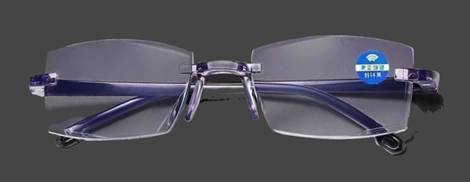

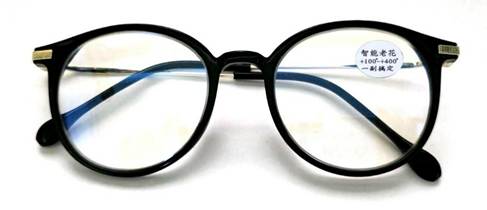

They
work indeed better than standard single-focal reading glasses. Practical
examples are when working at the desk, you can use the varifocal for both desktop
computer and reading your documents; when giving a speech, you can use the varifocal
for both interaction with audience and reading the computer on desktop.
No
optics textbooks had ever mentioned "Smart varifocal reading glasses".
These special lenses seem solely invented by lens manufacturers.
After
researching its optical secrets, I discovered that they are utilizing ��negative
spherical aberration��. The central portion of the lens is more convex, used for
near vision, while the peripheral portion is less convex, used for distance
vision.
The
difference of refractive power between near and distance vision, commonly
referred to as ��add�� in reading glasses, is only about 1D to 2D, not as much as
the 3D used by those over 60-year-old.
Because
there's no regulation by law, fake products are common in real world and web stores. They're labelled ��smart varifocal�� but actually are mere single-focal reading glasses. The method
to verify ��smart varifocal�� is very simple:
Just
hold the glasses about 50 cm in front of you and look through the lenses. If a
grid or straight lines appears curved, as if there's a convex or magnifying lens
in the center (see figure), it proves the lens is smart varifocal and has extended
depth-of-focus.
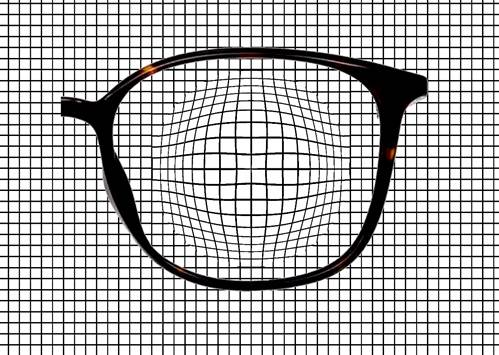
If
the lens doesn't bend the lines and straight lines remain straight (see figure),
it is not smart varifocal and is a single-focal lens. It's very easy to tell.
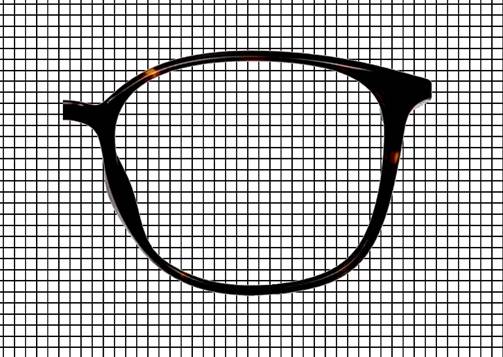
==
Spherical Aberration ==
Old
magnifying or convex lenses had spherical surfaces on both sides. The simplest
method to make a convex lens is to grind it along any
direction, without path restriction, in a spherical bowl. This type of lens has
imperfect focusing, with slightly stronger peripheral refraction and weaker
central refraction (see figure).
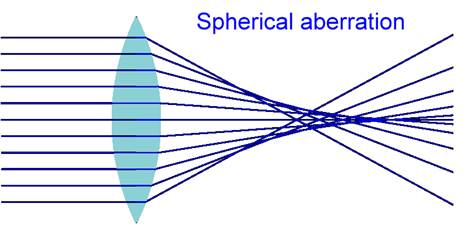
When
looking at graph paper through this lens, the periphery will be distorted (see
figure). This is called spherical aberration (SA). Originally, it refers to the
aberration caused by the imperfect focusing of a lens with a spherical surface.
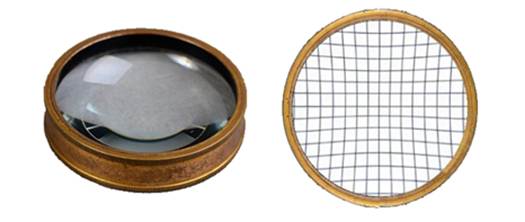 Spherical Lens
Spherical Lens
Ophthalmologists
hope to have convex lenses without peripheral distortion for fundus
examinations. Consequently, some manufacturers have developed aspherical lenses
(see figure). The surfaces of these lenses are not spherical, which offsets
spherical aberration, allowing for distortion-free viewing of graph paper.
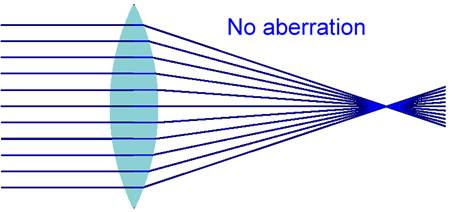
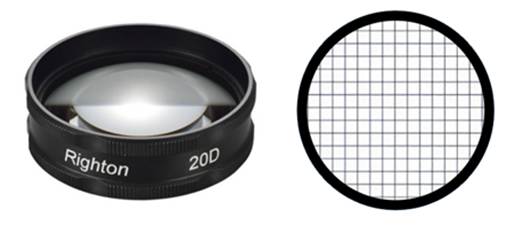 Aspherical Lens
Aspherical Lens
Advances
in grinding and molding technology have made it possible to manipulate
spherical aberration at will. It's possible to create lenses with stronger
peripheral refraction and weaker central refraction, similar
to traditional spherical aberration, called positive spherical
aberration (SA). Alternatively, it can create lenses with weaker peripheral
refraction and stronger central refraction, called negative spherical
aberration (SA) (see figure).
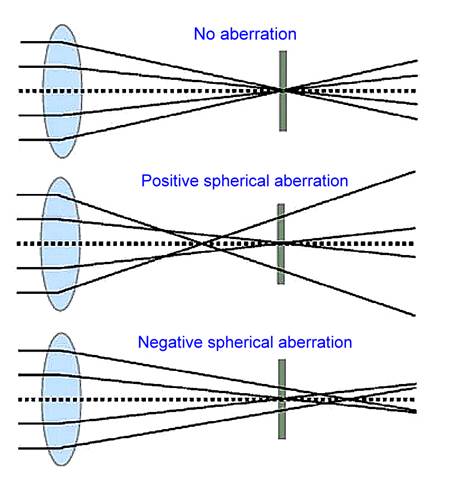
==
Application of Spherical Aberration ==
Cataract
surgery and corneal laser refractive surgery use various methods to create
multifocal optics to allow patients to see both near and distance without
glasses.
Spherical
aberration is one of the commonly used methods. Intraocular lenses (IOLs), such
as Rayner RayOne, utilize spherical aberration; the
Zeiss Beyond Laser Blended Vision (LBV) laser refractive surgery for presbyopia likely also utilizes spherical aberration.
Optimal
optics for both near and distance require a 3-diopters difference.
Optics
subtends less than 3 diopters are called ��extended depth-of-focus�� �V the
depth-of-focus is more than a single focus, but not so much as 3-diopters as required
for full presbyopia. After cataract or laser surgery for myopia, the solution
to this problem is ��monovision��: one eye's extended focus spans from far to middle
distance, while the other eye's extended focus spans from middle to near
distance. Using both eyes together, the middle distance
vision facilitates binocular fusion and it��s easy to switch between two eyes
for distance and near vision. For daily life, you��ll be able to watch TV at distance
and to read book at near easily without needing the
help of glasses.
To
prevent myopia from worsening, children use atropine drops. This limits their range
of focus, leading to a condition similar to
presbyopia. One solution is to wear multifocal glasses (right figure). Another
approach is to utilize a lens with a full correction at the center and a
lower-power concave lens at periphery for near vision, which is the optics of
positive spherical aberration (left figure).
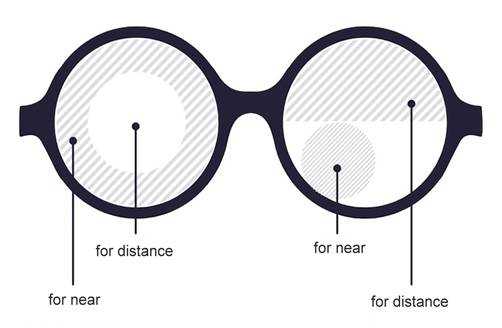
Zeiss
MyoVision is designed based on this concept (see figure).
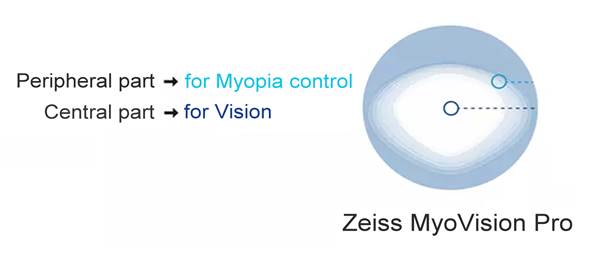
Smart
varifocal reading glasses apply the optics of negative spherical aberration:
the central part of the convex lens has stronger power and is used for nearer
vision; the peripheral part of the convex lens has weaker power and is used for
farther vision (see figure).
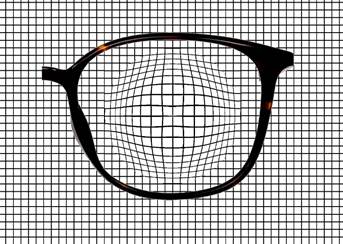
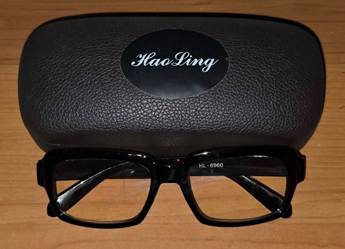

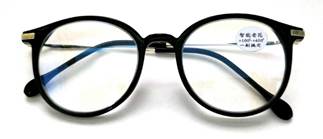

Compared
with progressive multifocal lenses, which use the upper part for distance and
the lower part for near (see figure), the near add of smart varifocal lenses is
usually less than 3D.
�V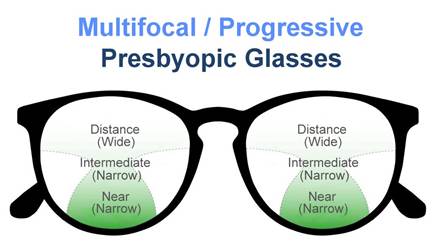
When
wearing progressive multifocal glasses, you have to use
the lower part of the glasses to frame and focus, and thus have a chin-up
posture in taking photos, (see figure). This is a common scene in the parks.
Smart varifocal glasses would eliminate this problem.
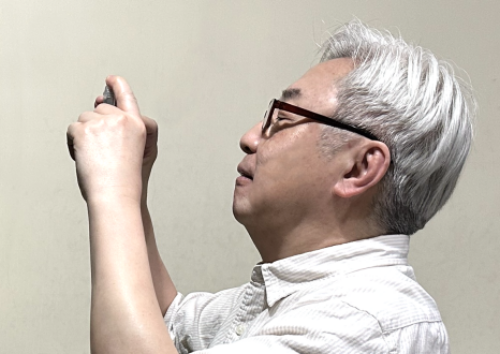
Smart
varifocal reading glasses with longer range of distance/near are truly rare.
I've bought numerous fake ones on web store such as Shopee,
only to find upon verification that they were actually
single-focal lenses!
Despite
the stickers claiming they were smart varifocal reading glasses (see figure),
they were actually rigged and not made of multifocal lenses.
If you see smart varifocal glasses in stores, please follow the instructions
above to verify them before purchasing.

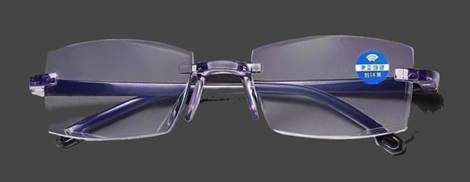
I
think the main reason is that no textbooks explicitly explain the optics of ��applying
extended depth-of-focus with negative spherical aberration as reading glasses��. Most people, when they hear the words ��multifocal��
or ��progressive�� reading glasses, think of them as traditional reading glasses that
focus for distance at top and focus for near at bottom.
Currently
available smart varifocal reading glasses have central focus of approximately
+2D and peripheral focus of approximately +0.5D, making them suitable only for
people with emmetropia. Optical shops don't offer customization for any other
refraction.
If
these smart varifocal reading glasses, which utilize the optical principle of
negative spherical aberration, can't be customized for various refraction in the near future, perhaps making them as clip-on lenses
(see figure) would allow people of any refraction to enjoy their benefits.
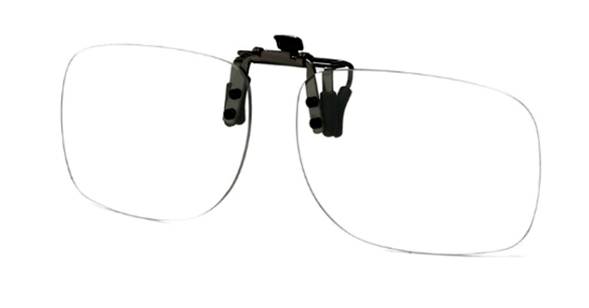
About
the terminology, traditional reading glasses with upper part for distance and lower
part for near are called ��progressive multifocal reading glasses��, while those utilizing
negative spherical aberration, as directly translated from Chinese language,
are called ��smart varifocal reading glasses��.